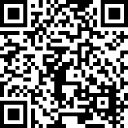Mixing It Up: My Take on Mixed in Key 10
As DJs, we’re always on the hunt for that next tool to help us craft mixes that leave a lasting impression. Enter Mixed in Key—the software that’s been making waves in the DJ world. In this post, I’m giving you a deep dive into Mixed in Key 10, breaking down its features, giving you the lowdown on its pros and cons, and revealing what I think is the software’s true star feature.
So, What’s Mixed in Key?
For those not in the know, Mixed in Key is like your secret weapon for harmonic mixing. It’s a slick piece of software that analyzes the key and tempo of your tracks, making sure everything blends together in perfect harmony. No more awkward transitions or jarring shifts—just smooth, seamless mixes that keep the crowd grooving.
Why I Decided to Give Mixed in Key 10 a Spin
Being new to the Mixed in Key game, I was eager to see what version 10 had to offer, and it didn’t disappoint. After some quality time with it, I can confidently say that the key detection feature is an absolute winner. Sure, the software has plenty of bells and whistles, but this is the one that really makes it stand out for me. Let’s break down why I think Mixed in Key 10 is a must-have for any DJ.

The Features That Matter
1. Advanced Key Detection Algorithm
Mixed in Key 10 boasts an advanced key detection algorithm, making it a DJ’s ultimate ally for perfecting harmonic mixing with unparalleled precision. Even after putting Lexicon‘s key detection to the test, MIK consistently delivered superior results. Its exceptional accuracy ensures seamless transitions and a polished, professional sound for your sets.
2. Energy Level Detection
Ever tried to figure out if a track is a mood-booster or a vibe-killer? Mixed in Key 10 has you covered with its energy level detection. It gives you detailed insights into how intense a track is, so you can keep the energy in the room just right—whether you’re building up to a peak or winding things down.
3. Advanced Cue Point Suggestions
Cue points can be a pain to set up, but not with Mixed in Key 10. This software analyzes your tracks and suggests cue points, making it easier to line up mixes, loops, and drops. It’s a massive time-saver, leaving you more time to focus on the fun part: performing.
4. Seamless DJ Software Integration
One of the things I really dig about Mixed in Key 10 is how smoothly it integrates with popular DJ software like Serato, Traktor, and Rekordbox. Your key and energy data is right there when you need it, making track selection and mixing on the fly a breeze. It’s all about keeping your workflow smooth and stress-free.
5. Customizable Tags and Metadata Editing
Let’s talk organization. Mixed in Key 10 lets you tag tracks based on key, energy level, genre—you name it. This customizable metadata editing is a godsend when you’re prepping for a gig. It makes finding the right track at the right moment as easy as pie.
6. User-Friendly Interface
Finally, there’s the interface. Mixed in Key 10 has undergone some serious design love, making it more intuitive and easier to navigate. Even if you’re a newbie, you’ll find it simple to get around, letting you focus more on your music and less on figuring out the software.
Pros and Cons: The Good, The Bad, and The Meh
Pros:
1. Key Detection That’s Spot-On
Let’s get real—key detection in Mixed in Key 10 is second to none. If you’re serious about harmonic mixing, this feature alone makes it worth the investment. It’s accurate, reliable, and a total game-changer. However, keep in mind that a good ear for music is still essential for optimal results. Remember, this is merely a tool, and it has its limitations.
2. A Metadata Editing Marvel
Customizing and editing metadata in Mixed in Key 10 is a breeze. It’s a super effective way to keep your music library in order, so you can quickly find the tracks you need when you need them.
3. Energy Level Detection That’s On Point
The energy level detection feature is a DJ’s best-kept secret. It helps you plan your sets with precision, ensuring the vibe in the room matches the vibe of your music.
Cons:
1. BPM Detection: Not Quite There
If there’s one area where Mixed in Key 10 could use a bit of a tune-up, it’s in BPM detection. It’s not as sharp as Serato DJ’s BPM detection, which can be a hassle when you’re trying to beatmatch or transition smoothly. I’d recommend double-checking BPM readings with your DJ software.
2. Cue Point Automation: Use With Caution
While the advanced cue point suggestions are super handy, they can sometimes be a bit too automated, especially if you’re spinning an open-format set. Not all tracks are created equal, so you might need to manually tweak or delete cue points that don’t quite fit.
3. Metadata Editing: Could Be Smoother
One small gripe I have with Mixed in Key 10 is the way it handles metadata editing. You’ve got to switch tabs to make edits, which can be a bit of a chore when you need to hear playback while tweaking. It would be great if everything could be done in one tab to streamline the process.
Why Key Detection is the MVP
If I had to pick just one feature that makes Mixed in Key 10 worth every penny, it would be the key detection. The accuracy and reliability here are unmatched, and it’s made a noticeable difference in the quality of my mixes. Harmonic mixing is key (pun intended) to creating smooth, flowing sets, and Mixed in Key 10 nails it every time. Whether you’re spinning house, techno, or hip-hop, this feature ensures your transitions are harmonically perfect, keeping the energy consistent and the crowd hyped.
Final Thoughts: Is Mixed in Key 10 Worth It?
In short—heck yes. Mixed in Key 10 has quickly become a go-to tool in my DJ arsenal. The key detection, energy level analysis, and cue point suggestions are all stellar features that make crafting the perfect mix easier than ever. Sure, there are a few areas that could be polished, like BPM detection and metadata editing, but the pros far outweigh the cons.
If you’re serious about your DJing game, upgrading to Mixed in Key 10 is a no-brainer. This software not only helps you streamline the technical side of things but also enhances the creative process, letting you focus on what really matters—dropping beats and keeping the crowd moving. For just $58, it’s available for both Windows and Mac, and you can even bundle it with other add-on software for a more comprehensive DJ toolkit.



